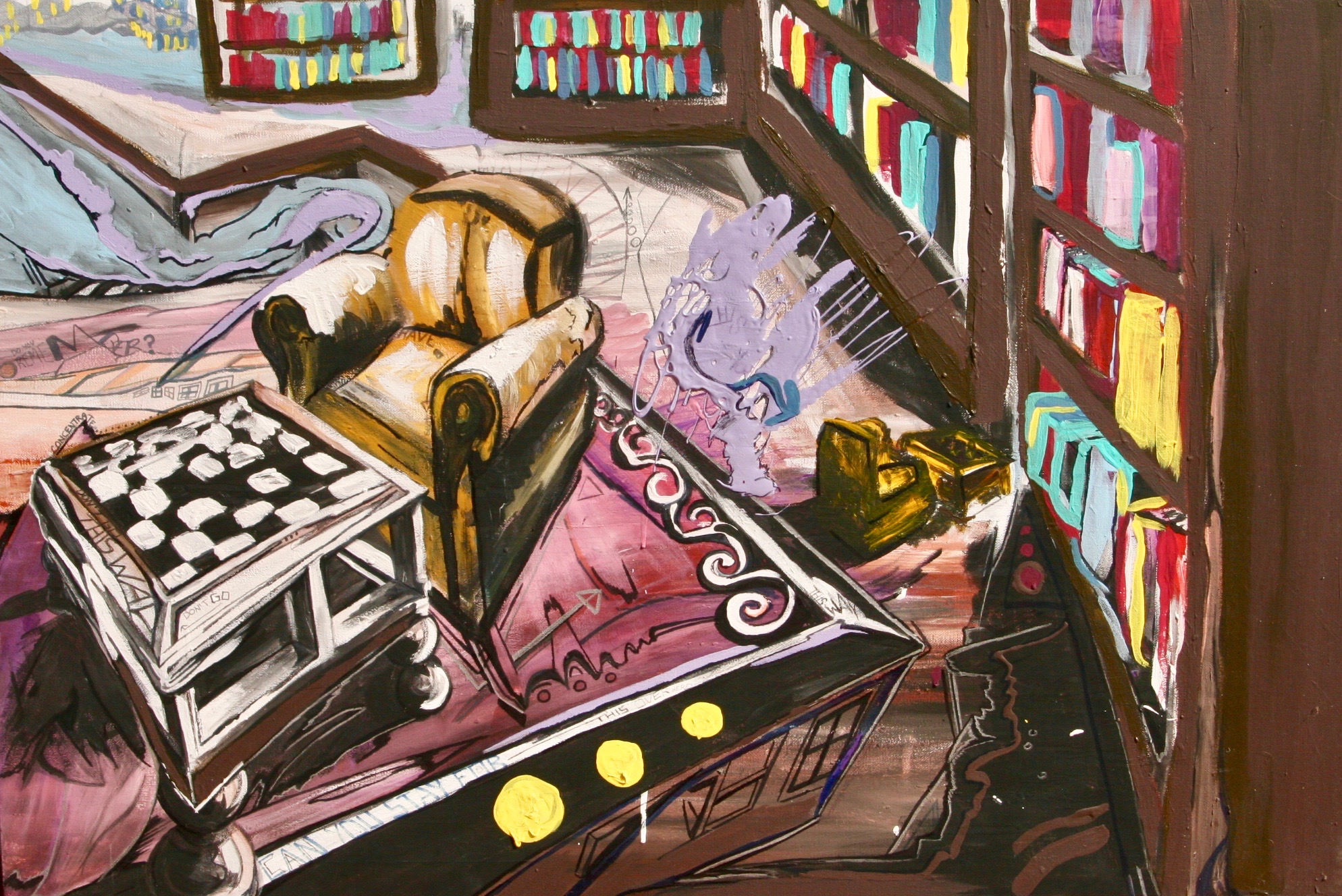Angela Alaimo O'Donnell
Carousel
"In Greek,'nostalgia' literally means 'the pain from an old wound.'
It's a twinge in your heart, far more powerful than memory alone.
This device isn't a space ship, it's a time machine. It goes backwards and forwards,
It takes us to a place where we ache to go again."
—Don Draper, Mad Men
She used to put us on the carousel,
our pretty mother, strap us on the horse
we chose to ride, the white one with the pink plume
on its bridle, the black one whose painted mane
would fly, or seem to fly, as we leaned forward,
rode up & down as we went round & round,
our pretty mother waving & smiling,
predictable as earth each turn & return.
She did not like this. She was dutiful.
Ours was love she did not have to earn.
We did not like it either, this fake horse riding.
We'd rather have our feet on the ground.
The three of us doing what we ought to do,
wishing, even then, that we wanted to.
The Body Remembers Her Conception
A stroke of bad luck for them
proved the best of luck for me.
Deep July heat, the Dog Star
raging, a quick storm of love
in the darkness made me be.
No idea where I'd come from,
I just was, a tiny body
of good stuff that eventually
would become what I'm made of,
eight pounds of skin, bones, a gallon
of blood, what all of us are
who begin in that lonely
moment of love and luck,
each of us lightning and thunder struck.
|
|
 |
 |
| AUTHOR BIO |
| Angela Alaimo O'Donnell, PhD is a professor, poet, scholar, and writer at Fordham University in New York City, and serves as Associate Director of Fordham's Curran Center for American Catholic Studies. Her publications include two chapbooks and nine full-length collections of poems. Her book Holy Land (2022) won the Paraclete Press Poetry Prize. In addition, O'Donnell has published a memoir about caring for her dying mother, Mortal Blessings: A Sacramental Farewell; a book of hours based on the practical theology of Flannery O'Connor, The Province of Joy; and a biography Flannery O'Connor: Fiction Fired by Faith. Her ground-breaking critical book on Flannery O'Connor Radical Ambivalence: Race in Flannery O'Connor was published by Fordham University Press in 2020. Her poems have appeared in many journals and anthologies, including Able Muse, Alabama Literary Review, America, The Bedford Introduction to Literature (anthology), Christian Century, Christian Poetry in America Since 1940 (anthology), Christianity & Literature, Contemporary Catholic Poetry (anthology), Flannery O'Connor Review, Italian Americana, Italian Poetry Review, Literary Matters, Mezzo Cammin, Peacock Journal, Presence, Reformed Journal, and Taking Root in the Heart (anthology), among others. O'Donnell's eleventh book of poems, Dear Dante, was published in Spring 2024. |
|
| POETRY CONTRIBUTORS |
 Grace Bauer Grace Bauer
 Hilary Biehl Hilary Biehl
 Carol Lynn Stevenson Grellas Carol Lynn Stevenson Grellas
 Julia Griffin Julia Griffin
 A. A. Gunther A. A. Gunther
 Katie Hartsock Katie Hartsock
 Ruth Hoberman Ruth Hoberman
 Babo Kamel Babo Kamel
 Jean L. Kreiling Jean L. Kreiling
 Lavinia Kumar Lavinia Kumar
 Jenna Le Jenna Le
 Marjorie Maddox Marjorie Maddox
 Mary Grace Mangano Mary Grace Mangano
 Kathleen McClung Kathleen McClung
 Angela Alaimo O'Donnell Angela Alaimo O'Donnell
 T. R. Poulson T. R. Poulson
 Richelle Slota Richelle Slota
 Linda Stern Linda Stern
 Myrna Stone Myrna Stone
 Gail White Gail White
 Amanda Williamsen Amanda Williamsen
 Joyce Wilson Joyce Wilson
|
|
|
|
 |
| Anna Lee Hafer is a studio artist based in the Philadelphia area whose work is heavily influenced by such famous surrealist painters as René Magritte, Salvador Dali, and Pablo Picasso, all of whom strove to build their own realities through small glimpses into a particularly confusing, but utterly unique worldview that dictates its own specific set of instructions. With references to the laws and physics of Alice's Wonderland, the artist challenges the audience's inherent understanding of perspective, reality, and universal order.
In her work, Hafer pours and layers paint to create dimension and texture, mixing different styles and colors onto each other until they produce a 3D effect. Through marker and pencil that create shadow, she further enhances these forms and separates them from the background. Heavier layers and thicker brushstrokes in the foreground of her work push the painting toward the viewer, whereas the thinner layers and small brushstrokes in the background, elongate the space and push away from the viewer. By juxtaposing interior and exterior elements, Hafer makes the audience question whether they are looking at something inside or outside.
For additional information, please visit www.hafer.work.
|
|
|
|
|
|
 |
|
 |
|
|
|
|
